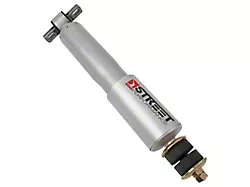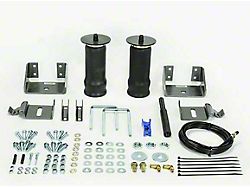Symptoms of Worn Out F150 Tie Rod Ends
Have a feeling in your gut something just isn’t quite right? Here are some of the most common issues of faulty tie rod ends:
Loose steering: A loose or vibrating steering wheel points directly at a worn-out tie rod end. When the part starts developing play due to wear, the steering can develop a clunk at slow speeds and a vibration as you pick up momentum. This symptom can also mean that a tire is out of balance, so be sure to check them before tearing apart the front end.
Squeaking from the front end while turning: Your power steering will let out a groan when it’s low on fluid, but if you hear a sharp squeak as you turn, it might be because the ball bearing inside of your tie rod end has worn out.
Poor front-end alignment: Having issues keeping your F150 driving in a straight line is a sign the front-end alignment is off, which is another warning a tie rod end may be on its last leg. When the tie rod end wears out, it will cause the front end to fall out of alignment and cause your pickup to pull in either direction.
Unusual tire wear: Take a look at the tire wear on your work horse. Uneven wear between the inside and outside edges of the tires is an indication that the front end has fallen out of alignment due to a worn-out tie rod end.
Loss of steering: Losing your steering all together is the most obvious sign of a broken tie rod, hands down. If you yank the steering wheel and nothing happens, well, you should stop driving as soon as you can. There’s good chance a tie rod end has completely broken.
Checking the Condition of Your F150 Tie Rod Ends
Now you’re convinced you have a bad tie end rod. Fortunately, it’s an easy inspection you can perform in your own garage.
First, jack up the front end of your pick up until the wheel is off of the ground. Before taking the wheel off, grab ahold of it in the nine and three o’clock positions, checking for play by pushing and pulling with each hand. If there is any wiggle, it’s worth removing the wheel and having a look at the tie rod assembly.
Once the wheel is removed, check behind the brake rotor where the inner tie rod end should be visible. If the rubber boot is cracked or worn and has grit build up, it’s time for replacement. If there are no visible signs of wear on the rubber boots, check the tie rods for any play—they should be rock solid.
Replacing Your Ford F150 Tie Rods
Don’t worry – replacing inner and outer tie rod ends won’t break the bank. Complete direct replacement kits can be found for well under $100.
Replacing the outer tie rod ends on your F150 is a quick job. Simply remove the front wheels and follow the instructions to properly break the tie rod end loose. Install the new part and fill it with fresh grease. You’ll be good to go.
Inner tie rods are another story if you’re not mechanically inclined or if you don’t have specialty tools required to successfully complete the job. Inner tie rod ends often require specialized adaptors to break them loose and re-tighten them. Without them it’s often impossible. If you’re a do-it-yourself guy, picking an adaptor kit is a reasonable investment.
It’s important to have your pickup properly aligned after replacing the tie rod ends.
Preventive Maintenance for Your Ford F150’s Front End
An easy way to ensure your tie rod ends are properly maintained is to grease them after an oil change. With your F150 is already on jacks, find the grease fitting on the tie rod and fill it with fresh grease using a grease gun. Yes, it will make oil changes take a bit longer, but it should delay the need to replace tie rod ends.
Has your Power Steering Pump Failed?
Like any part on your F150, power steering pumps wear with time. Below are the two most common signs yours might be on its last leg:
Deep whining noises while turning: Groaning noises aren’t good, especially when they are coming from underneath your F150’s hood. Strange noises while turning could be the result of a fluid leak in your power steering system, or because the power steering fluid is too low. If the latter is the case and has been left alone too long, it could cause permanent damage to your power steering pump.
A stiff steering wheel: Turning the steering wheel on your workhorse should be effortless. When power steering fluid is leaking or if there is air in the system, a simple turn of the wheel becomes a difficult thing to do. If the issue becomes more common, check your steering fluid levels.
Experience either of those? First check your steering fluid level. If it’s running low, immediately fill it up. Have you added fluid and the problems are still present? It might be worth checking for further issues like fluid leaks or air pockets in the system. If you’re really unsure, have a mechanic check the condition of the pump itself.
Fitment Includes:
- 1997, 1998, 1999, 2000, 2001, 2002, 2003, 2004, 2005, 2006, 2007, 2008, 2009, 2010, 2011, 2012, 2013, 2014, 2015, 2016, 2017, 2018, 2019, 2020, 2021, 2022, 2023 and 2024 F150s
- Base Model, XL, XLT, Lariat, Lightning, King Ranch, Harley Davidson,STX, FX2, FX4, Limited, Platinum, Raptor
- 2.7L EcoBoost, 3.5L V6, 3.5L EcoBoost, 3.7L V6, 4.2L V6, 4.6L V8, 5.0L V8, 5.4L V8, 6.2L V8
*Please see product pages for any exceptions.


















